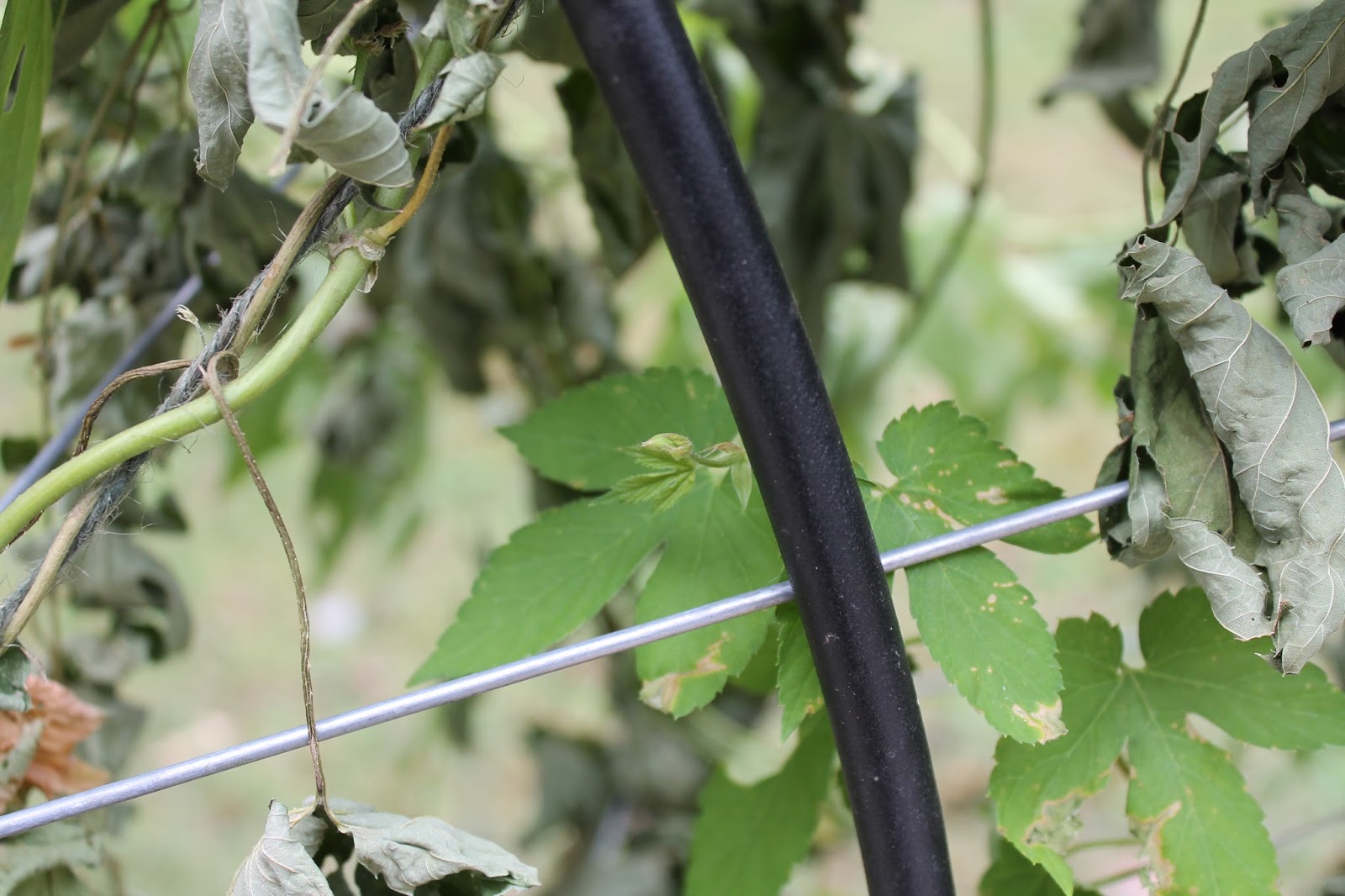In this particular case I'm using a recipe kit from Austin Homebrew, their Kalamazoo IPA.
This kits comes with pelleted Centennial hops which I will be using
along with my own hops. The vast majority of the hops I have harvested
are Columbus, which are normally used as a bittering hop as they have a
high alpha acid content. However, it is unlikely that my own homegrown
hops will have achieved such high levels of alpha acid, especially in
their first year. I'm also not going to spring for a lab analysis. For these reasons I've decided to split them up, half
(about half a pound, wet weight) going in at the start of the boil (as
bittering hops would) and the other half going in 15 minutes before the
end of the hour (along with the meagre offerings from the other two
hops) to contribute to the flavour. Here's the first lot going in:
I poured them in straight from the freezer. This is what they looked like after a couple of minutes:
I poured them in straight from the freezer. This is what they looked like after a couple of minutes:
The smell at this point is amazing. I always enjoy brew day for the way it makes the house smell but using fresh wet hops always makes it that much more so. As I said earlier, I added the rest of the hops towards the end of the boil. All three Willamette cones (bless their hearts):
As well as 2oz of Cascade:
And the rest of the Columbus:
At this point the smell in the whole house is incredible, as long as you like hops as much as everyone in this house does. Once the boil is done it's time to cool the wort as quickly as possible. In our previous house I had done this by immersing it in the sink full of water with frozen cool packs and ice. As you can see in the photo below this isn't possible in our new place:
This is actually my first time using a cooling coil (also from Austin Homebrew). I should probably make it clear that I'm not affiliated with them in any way other than being a happy customer. Previously, wort cooling had taken up to 30 minutes. This coil brought it down to less than 15. I have read elsewhere that the quicker you can cool your wort the less haze you will get in the final beer, which is, unsurprisingly, referred to as chill haze. Everything I've read about it says that it doesn't affect the flavour of the beer so I hadn't worried about it much. We will see if this beer ends up with less in the way haze once bottled.
Once the wort has cooled and the gravity measured, the yeast starter culture is added. With the lid attached and air lock in place, the whole thing is placed in the basement to ferment:
The basement stays at a pretty constant 70 degrees Fahrenheit (21 degrees Celsius) and I was rewarded the next day with plenty of activity in the airlock. I have high hopes for this beer. I once previously made a beer with fresh hops I bought from my local homebrew shop in Houston (DeFalco's). It was easily the best beer I had made up to that point. If you have never tried using fresh hops please do yourself a favour and try it soon.

































